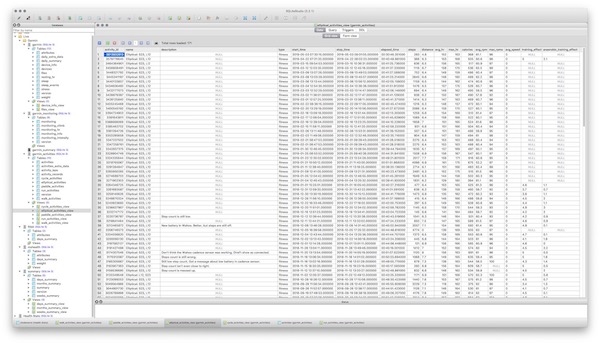

- DB BROWSER FOR SQLITE LOAD MULTIPLE DBS HOW TO
- DB BROWSER FOR SQLITE LOAD MULTIPLE DBS INSTALL
- DB BROWSER FOR SQLITE LOAD MULTIPLE DBS UPDATE
- DB BROWSER FOR SQLITE LOAD MULTIPLE DBS CODE
In that method, we call the method of the class and pass the collection to it. Finally, we define the method, which will be called on the event of the page. This allows us to bind the attribute of the control to the property of the page. We use the constructor to initialize the collection and set the DataContext property of the page to the instance of the page. Private async void Page_Loaded(object sender, RoutedEventArgs e)Īwait DatabaseConnector.LoadRecordsAsync(Items) Var descriptionOrdinal = reader.GetOrdinal("Description") Var nameOrdinal = reader.GetOrdinal("Name") Using(var reader = await command.ExecuteReaderAsync()) SQLiteCommand command = new SQLiteCommand("SELECT * FROM Data", connection) Using(SQLiteConnection connection = new SQLiteConnection("Data Source=Assets/uwp.db Version=3")) Public static async Task LoadRecordsAsync(ObservableCollection items) Open the DatabaseConnector.cs file and replace its content with the following code: using Anyway it seems that SQLite won't be the best option to handle such a large database.

Thousands of transactions will throughout the day and I'm afraid that reading and writing a single file will slow down the process. Attach another database (as mentioned above) to the main connection. ĭouble-click on the project name in the and select. I'm planning to replace an Oracle DB with SQLite. Open a second instance of DB4S and open the other database in there. Third, choose CSV as the data source type, choose the. Second, choose the database and table that you want to import data then click the Next button. First, from the menu choose tool menu item.
DB BROWSER FOR SQLITE LOAD MULTIPLE DBS HOW TO
In the right-click on the node and select. We will use the SQLite Studio to show you how to import a CSV file into a table with the assumption that the target table already exists in the database. For that, however, we first need to add an SQLite package to our project. Use this web-based SQLite Tool to quickly and easily inspect sqlite files on the web. Now, we are going to create a routine for loading records from the database. A free online SQLite Explorer, inspired by DB Browser for SQLite and Airtable. Additionally, we defined a handler for the event that we will use to load the records from the database. Finally, we defined two elements and bound their attributes to the and properties of the class. That allows us proper binding to the class properties. We set the value of the attribute of the to, which is the name of the container class we have just created. We bound the attribute to property, which we will define later in the file. In the code, we added a new control with the name.
DB BROWSER FOR SQLITE LOAD MULTIPLE DBS CODE
Replace the content of the file with the following XAML code: SQLite has the ability to load extensions (including new application-defined SQL functions, collating sequences, virtual tables, and VFSes) at run-time.This feature allows the code for extensions to be developed and tested separately from the application and then loaded on an as-needed basis. In the double-click on the file to open it. Next, we are going to add a ListView control to the main page and define how the content of each item should be shown.
DB BROWSER FOR SQLITE LOAD MULTIPLE DBS INSTALL
But you should install it on your own computers, too, for your own convenience.Next, in the, double-click on the file to open it and replace the content of the file with the following code: namespace ListViewSQLiteĪs you can see, the class has two string properties and mimicking the structure of the database’s table. However, You can have multiple tabs (click the open tab.
DB BROWSER FOR SQLITE LOAD MULTIPLE DBS UPDATE
If you are a Stanford Journalism student, the Macs in the McClatchy lab already have the SQLite Browser installed. I couldn't get it to run multiple selects, but you can run multiple writes if you separate the lines with semi-colons: update Item set Description 'Protection' where no 'EXTSOFAUARD' update Item set Description 'Fabric' where no 'FABRIC1' I don't believe that you can.


 0 kommentar(er)
0 kommentar(er)
